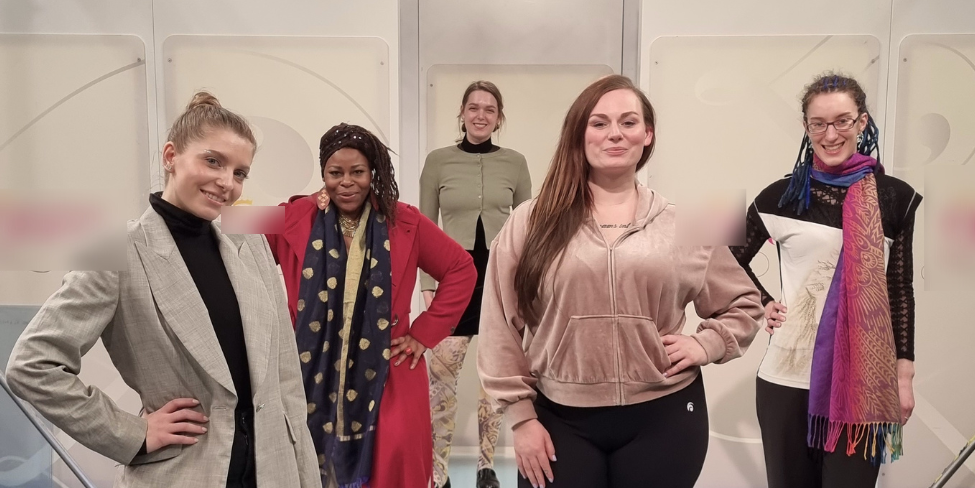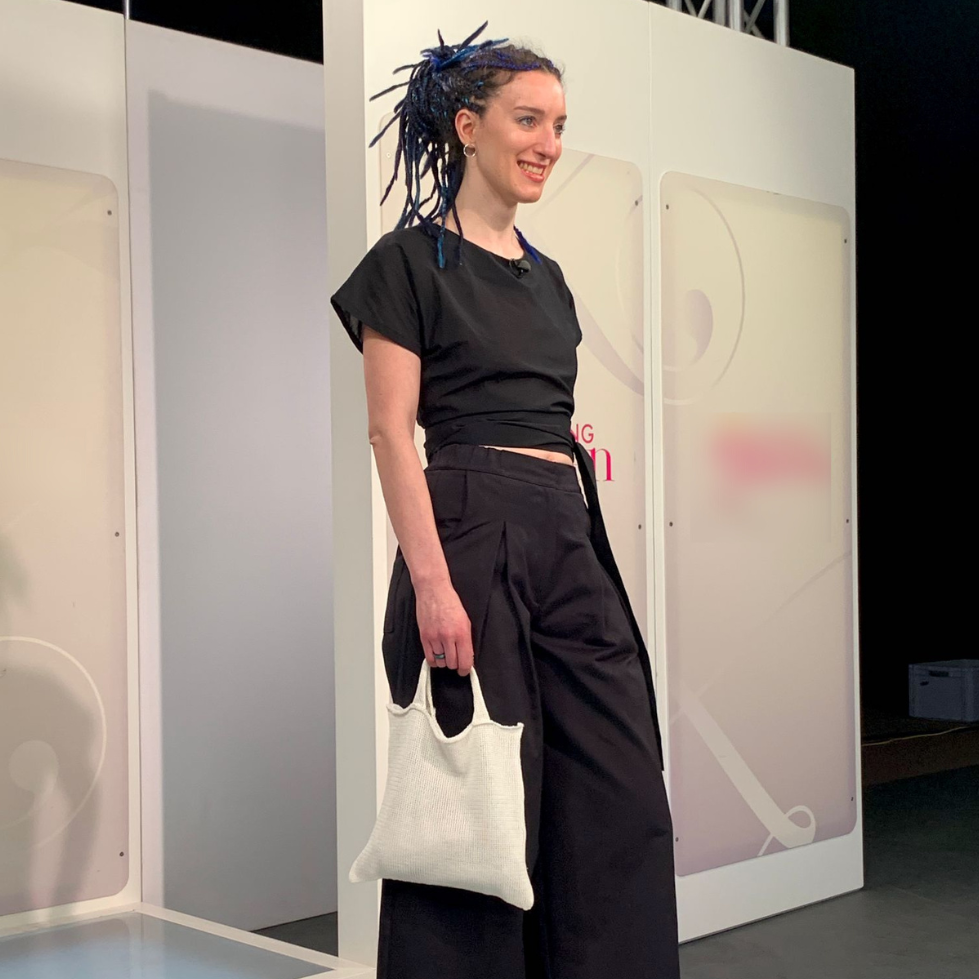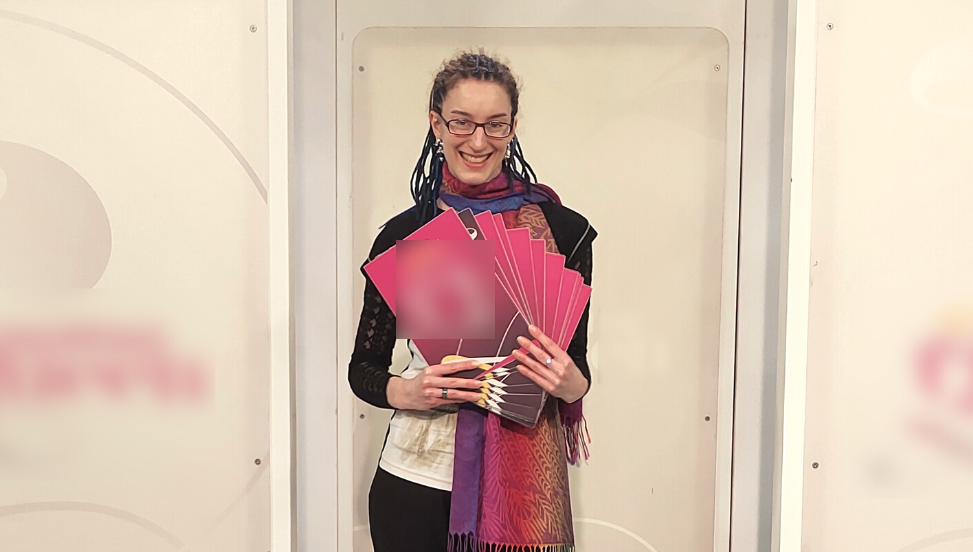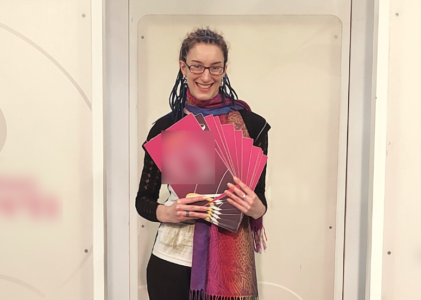I have a confession to make… I love Reality TV.
In a world where the problems we face seem insurmountable, where the daily news segments are ever more depressing, where the threats of the climate crisis become ever more real, I struggle to watch anything serious. I get too involved. It makes me anxious. I don’t sleep well.
Reality TV offers a welcome contrast: light and fun entertainment. Be it cooking shows, dating, or modelling – If it’s good, I’ll watch it.
Now the thing is, as a sustainability professional, it is hard to miss a) the absurd waste that occurs in some of these shows and b) the lack of sustainability as a topic within Reality TV. Why do so many cooking shows revolve around meat, when clearly the evidence is, that we have to reduce meat consumption to protect the planet? Why do decorating shows buy everything new when obviously second-hand items would be sooo much more sustainable?
Well… I am a woman of action and I decided to do something about this. I love watching Reality TV – So why not participate and hold up the sustainability flag?
Getting into Reality TV
Turns out, it’s actually not that simple to get into Reality TV. The application processes are surprisingly time-intensive and I discovered that for most of the big famous shows you have to be a US citizen… which I am not.
But… no challenge that can’t be surmounted… I decided to check out the German Reality TV scene and found the perfect show: Shopping Queen.

For those of you who are unfamiliar with it, here’s a quick summary:
5 women from the same city come together for a week of shopping. They get a theme (e.g. “style your outfit around your white pants“, or “the perfect beach look“) from fashion designer Guido Maria Kretschmer and each day 1 of the women sets out to buy an outfit matching the theme. Each woman has 4 hours and a budget of 500 € to complete her outfit.
In the meantime, the remaining 4 women speculate on what the shopper will buy and once she is back they rate the outfit. And at the end of the week, the woman with the most points wins and becomes the new “Shopping Queen”.
So what does this have to do with sustainability?
The Problems with Fast Fashion
100 million tons of textiles are produced every year. 92 million end up as waste. 20% of global wastewater stems from the fashion industry. Nearly 10% of microplastics in our oceans come from textiles.1 And the fashion industry is also known for exploiting garment workers and poor human rights records.2
There is no doubt that the fashion industry and the way we consume fashion have to change.
But how?
5 Steps towards Sustainable Fashion
Being more conscious about fashion doesn’t need to be hard. Here are some simple steps you can follow:
- Don’t buy what you don’t need. This sounds obvious, but unfortunately, it isn’t. Too often we buy things on impulse. Next time you’re about to buy something – ask yourself: Do I really need this? What you don’t buy doesn’t have to be produced. And what isn’t produced also doesn’t have a negative impact.
- Rent clothes rather than buying them. Often we need clothes for special occasions, but we wear them maybe once or twice. Rental is a really good option to fulfil your need – say a fancy dress for a wedding, or that perfect handbag that matches your party outfit – but with a much lower impact on the environment. The key difference is, that each item of clothing is worn much more often, i.e. rentals ensure that we really get the maximum use out of every piece of clothing. And what’s also really cool about rental: It brings the fun back of playing with fashion. If you like experimenting with different looks, you can do so in a much more conscious and sustainable way. Check out e.g. these suggestions for clothes rental services in the US, in the UK or in Germany. More and more stores are offering rentals and there are an increasing number of rental apps and online shops. You can also type “clothes rental” into google maps and just see what’s nearby.
- Buy pre-loved clothes. If rental is not an option, the next best possibility is to shop second-hand. Again, anything you buy second-hand does not need to be produced new and therefore, you save all the resources and pollution that come with the production of new clothes. It takes a bit more time to shop second-hand, but if you enjoy fashion, it can also be a lot of fun to go for a pre-loved fashion treasure hunt.
- Buy from sustainable brands. If it has to be new – and yes, sometimes it has to be – please make sure to buy from sustainable brands. From underwear to business suits, from sportswear to summer dresses – nowadays you can get almost anything “in sustainable”. There really is no reason to buy from unsustainable brands anymore. A really good resource on how brands are doing is the brand directory by Good On You. They rated thousands of brands and you will find both big know brands (usually with bad ratings) as well as a broad range of purpose brands that live and breathe sustainability.
- Stop shopping from big brands. While not all big brands are “evil”, unfortunately, most of the big names have a poor record when it comes to sustainability. If you don’t know their sustainability record – you’re better off betting against them.
Bringing Sustainability to Shopping Queen
My goal for the show was clear: Whatever the theme, get everything as sustainably as possible. Ideally, through rentals, as this is one of the rising trends in sustainable fashion. I confirmed in advance whether rentals would be allowed and after some back and forth, I got the reply: Yes, rentals were ok as long as I stayed within the budget (considering I’d have to rent the items not just for the shopping day but also for the finale).
Behind the Scenes
Sustainability mission aside, it is actually a really fun and interesting experience to participate in a reality show. For example, I would have never guessed how many shots it takes to film a simple scene like “arriving at the studio”. Filming all these extra shots takes up a lot of time.
Every morning, we would arrive at the studio at around 9 am and stay until about 7 or 8 pm. Maybe it doesn’t sound too long, but I can tell you it is exhausting. Fun! Don’t get me wrong… but really, really exhausting. Basically, you have to be “switched on” constantly. The day starts with everyone being wired up (for mics) and then filming the “arrival scenes”.
This is what it looks like in practice: The camera guy tells you “walk along that wall”. And you walk along that wall while he films you. Then he goes: “Again, but this time go around the corner”. So you go back and walk along the same wall, but this time you also turn the corner. Then he asks you to go back to the wall, just not as far this time, and he films you from a different angle as you turn the corner. Then he tells you “Come around the corner and then enter the studio door”. And he films you as you walk around the corner and enter the studio door. And then he says: “Enter the studio door”. And he films you from a new angle. So a scene that on TV might take… 10? 15? seconds takes about 30 minutes to film. Then we get de-wired, we can take off our jackets and get re-wired for indoors.

This continues all day. Whatever we film, almost always there are multiple additional shots to take. This version or that. Or the same scene just from a different angle. One of my favourite examples is the “listening shots”. In the show, the 5 women meet each morning in the studio. This means they sit in a semicircle of chairs chatting to each other and of course – as is polite – listening to the others when they talk. So what happens is, we film the “studio scene” (all of us sitting down in the chairs and then chatting), and then once it’s done, we film the “listening scene”. I.e. the camera is pointed first say at person A and they are told to look very interested, maybe nodding at person B. Then look at person C and again look very interested, etc. So you have 5×4 = 20 shots to film to capture every single person “listening” to everyone else in turn.
After the chatting scene, one of the women leaves for her shopping day and the others stay in the studio. If you thought that means we were getting a break: You’re wrong. We are filmed commenting on the “home video” (showing the shopper’s flat), we have to speculate what the shopper will buy, we need to film some “fillers” (like us dancing on the runway while waiting for the shopper to return), we are asked to cheer the shopper on, and so on… And – as I hope I made clear with my “arriving scene” and “listing shots” examples – all of this takes a lot of time. Luckily as the week progressed we (the candidates) became more and more “professional”, so by Friday we probably had like 2 hours for lunch as a break.
My Shopping Day
One thing people don’t realize when watching the show is that the 4-hour time limit to complete the outfit includes the time needed to film additional shots. For every outfit you touch, for every item the shopkeeper shows you, and for everything you try on and discard – your shopping tour is stopped to film closeups, a top-to-bottom outfit scan, or to catch the moment of you taking that piece of clothing from the rack – all the while the time keeps running.
Another thing people don’t realize is that your selection of shops is actually quite limited. That’s because you can only go to stores that gave permission to film prior to the show. Once you’ve been selected to take part in the show you actually have to turn in a list of shops that you would like to go to and the studio will request permission to film for some of them. Unfortunately, there is no guarantee that you get to go to your favourite shops.
Of course, all the shops I had listed were either second-hand stores or rental places or sustainable brands, but in the end, only 3 shops (plus the beauty parlour) from my wishlist gave permission to film. And remember that in these shops you need to find not just your clothes, but also shoes, jewellery, accessories and so on.
As you can imagine, this makes it quite stressful. I had not gotten the big second-hand store I wanted and instead I had a tiny second-hand shop on my list. We went there, but really they didn’t have anything that was even remotely a cut-out (our theme for the week). And even though I only tried 3 dresses in that first shop (I thought, maybe I can make the cutout myself if I find the right dress) we spent like 1.5 hours to get there and do all the extra filming. This is when it really hit me how much time all that extra filming really costs.
Next, I wanted to try the clothes rental place, but someone in the filming crew told me that they don’t have cut-outs. That was another surprise: I did not think the crew would get involved. I know they were trying to be helpful, but in retrospect, I shouldn’t have listened to them. It turned out later that the rental place would have had outfits matching the theme… ah well…
In the end, we went to a small sustainable boutique, that luckily had given the permission to film, and where I got most of my outfit.
It was a clean look made up of various sustainable brands. I was both very relieved to have something (sustainable) that fulfils the theme and that I actually like – this is definitely something I will wear again.
Next, was makeup. I usually don’t wear makeup, but for the show, I had researched a beauty parlour that uses natural cosmetics. For me, it was clear: “Mission sustainability” had to include my makeup as well.
After 4 very stressful hours, I had my outfit and makeup! What a relief! I had managed in time and in budget, it was within the theme and it was sustainable. Bam! Now all that remained was to get back to the studio and get the ratings from the other women.


The Other Candidates
I really enjoyed spending this week with the other 4 candidates and I’m glad I participated because otherwise, I would never have met these 4 wonderful and interesting women. Each one of them has a different story, a different style and a different personality. What an amazing group of women!
The Crew
I’m not sure what I had expected but surely not the positive energy of the crew we had in Berlin. They guided us through the week, joked around and assisted where possible. They made us feel at ease and helped us to feel less awkward in front of the camera. I’m sure it’s also part of their job, but I was surprised at the lightness of it all. Thank you to the crew for making this such a pleasant experience.
Guido
People keep asking: Is Guido Maria Kretschmer as nice in person as he is on TV? The answer is: Yes, he is. Of course, we only met him very briefly for the finale, but what I really appreciate is that he never says something negative about any participant. He might critique the outfit, but never the person wearing it. Instead, he is full of praise and compliments. When it comes to delivering constructive feedback, we definitely can all learn a lot from him. He also took the time to answer our questions, and to take selfies with us. I appreciate that! Thank you, Guido!
Summary
Overall it was a really cool experience. I love the group of women I met through Shopping Queen. The film crew in Berlin was really nice. I did not make a fool of myself and I did not have to walk down the runway naked. And while I didn’t succeed in renting parts of my outfit, I did end up with a cool outfit from purpose brands. I really hope this shows that sustainable fashion is attainable for everyone. And who knows… maybe I was even able to inspire future Reality TV participants to try the sustainable path as well.
Resources
1) 10 Stunning Fast Fashion Waste Statistics – Earth.Org
2) What Is Fast Fashion and Why Is It So Bad? – Good on You


